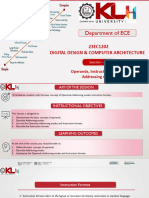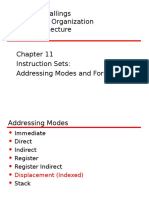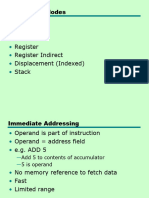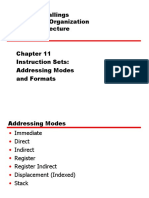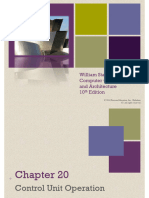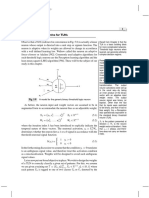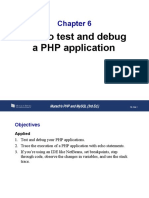0% found this document useful (0 votes)
68 views36 pagesPART13
The document discusses different addressing modes used in instruction sets including immediate, direct, indirect, register, register indirect, displacement, and stack addressing modes. It provides details on each mode including their algorithms, advantages, and disadvantages.
Uploaded by
halilkuyukCopyright
© © All Rights Reserved
We take content rights seriously. If you suspect this is your content, claim it here.
Available Formats
Download as PDF, TXT or read online on Scribd
0% found this document useful (0 votes)
68 views36 pagesPART13
The document discusses different addressing modes used in instruction sets including immediate, direct, indirect, register, register indirect, displacement, and stack addressing modes. It provides details on each mode including their algorithms, advantages, and disadvantages.
Uploaded by
halilkuyukCopyright
© © All Rights Reserved
We take content rights seriously. If you suspect this is your content, claim it here.
Available Formats
Download as PDF, TXT or read online on Scribd
/ 36






















